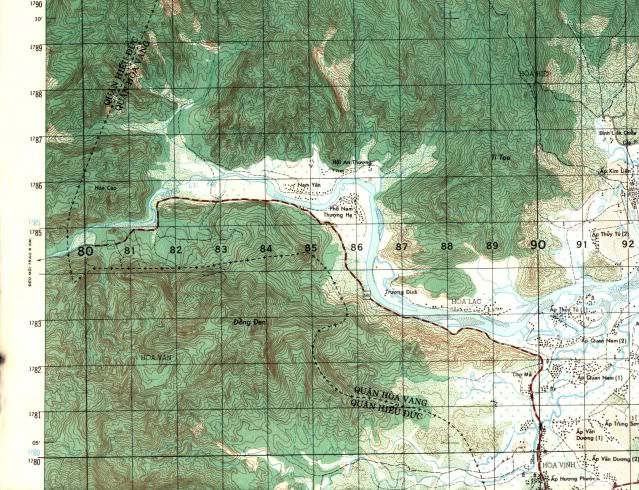Re: Vietnam Snipers
The averange sniper shot in Vietnam was just north of 400 yards.
What we used was Starlight scopes mounted on M16a1s. They were most effective after we got re-supplied. As we all know, GIs throw a lot of stuff away. Left in position was discarded C-rats, (no one wanted to carry ham and lima beans), entrenching tools were also left, (ou can dig just as fast with a bayonet).
Anyway we got re-supplied once every 5-7 days, when we left the re-supply point we would leave guys behind with the '16/starlight set up and pick off the bandits who went through our trash.
A team with M16/Starlights were great at trail junctions also. Badits used trails at night.
It was simple to use a map and protractor to measure the range and the starlight scopes were pretty good at 300-400 yards. Also the front sight of a rifle can be used as a range finder. I taught that in my sniper schools. Example, the average width of a soldier's soulders is 19 inches. The M1/M14's front sight is .076. You divide 19 by .076 you get 250 yards. If the target (shoulders) is the same size as the front sight, its 250 yards away. If the target is half the size of the front sight, its 500 yards. With practice you can get pretty good. It works the same way as mil dots. You just have to learn your rifle.
The M21s didn't really start showing up until after I left, we used what we had. We didn't pack a desgnated rifle, no one wanted the additional weight of a bolt gun target rifle when the M16 worked.
The first snipers in Vietnam, both army and marines were from the respective rifle teams. After years of shooting High Power and long range matches you "just know". You know your hold overs and favors. You have the fundamentals down or you don't stay on the rifle team.
The AMU sent their high power shooters to Vietnam as snipers and to conduct sniper training. I believe the marines did the same thing. In fact it was a couple of those, Wayne Young and Shelly Lamb who sold me on my M1A in 1977 and got me lined up for the USAMU Sniper School in '79.
After Vietnam, and the downsizing of the military the AMU still kept up their sniper program, they started the USAMU Sniper School and the cadre were for the most part the AMU snipers from Vietnam. They provided the training for cadre for future sniper schools, the Infantry Center's Army School, the Marines, and FBI and other civilian LE sniper schools.
They used the M21s in those schools. I went to the AMU Sniper school and later taught sniper schools using the M21. I found it to be an excellent system. Contrary to some of the post I see here, the mount held up. We zeroed the scopes and they held their zero while taking the scope off and putting it back on. It held. They were pretty good at range estimation also.
The best advantage I found with the M21 is the lack of muzzle flash. We did a lot of night firing using the Starlight. Using nothing but the M14 flash suppressor and M118, there was no detectable muzzle flash when fired.
If you got your face next to the shooter, you might see a spark coming out of the action but that's it.
If I was to go back in time, and was to go back to Vietnam as a sniper, knowing what I did then, and what I know now. Even the thousands of rounds I fired out of the M14/M21, I'd still pick the M16a1.
Reason being, you didn't have the extended range you had in Korea or have in Afgahn. 300 - 400 yards the 'A1 with M193s is effective, even at night with the Starlight scope.
In the jungles, I would much rather do my fighting at night. Contrary to popular belief, the Vietnamese can't see any better then we can, in fact, because of our diets, I believe we can see better.
The little shits thought they owned the night, that wasn't the case. Night fighting doesn't require the long range you get with todays fancy rifles.
I shot a lot of Combat Matches with the M16a1, like any other rifle, you get to know it. You learn the hold over/unders and favors.
In short, its not the rifle, its the fundamentals and tactics. I'm lazy, I like the light weight of the M16a1.
I was impressed with the M21, but it's heavy.




